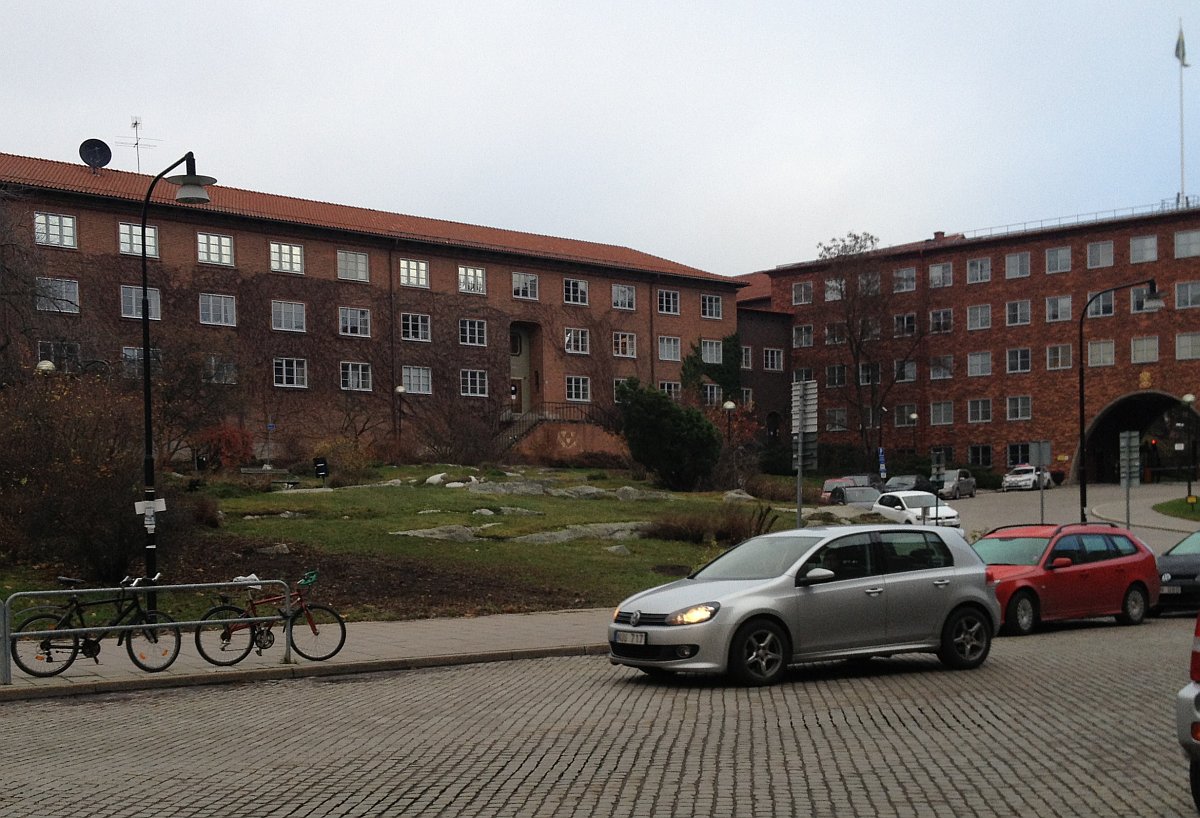Meetings at Bofors in late 1954 regarding status of current projects
Minutes from two meetings at Bofors (on 1954-09-22 and 1954-12-08) discussing the status of various projects. More specifically:
- Kv 155 (SPG; later became akv 151, even later bkan 1)
- Project 6400 (heavy tank, aka. KRV)
- FH 105 X (105 mm towed field howitzer)
- Obusier de 155 mm Modèle 50 (popularly called “Haubits F” or “Fransyskan”; a towed French howitzer license produced by Bofors)
- FAK 120 X 53 (a towed 120 mm automatic AA gun; considered by the meeting attendants to be of doubtful value)
- Lvkv fm/49 (a SPAAG)
- “Light brigade AAA”; unspecified 20 or 30 mm towed AA gun
- 75 mm L/60 gun for strv 74
- “Gjallarhorn”, speculative man-portable light anti-tank weapon
Archive reference: SE/KrA/0266/002/01:H/F I/1
Orientation regarding current projects (may 1954)
Minutes from a meeting (1954-05-04) at the arms administration’s vehicle bureau regarding the status of current projects. Mentions the “tankette” (project 6400 aka. the KRV), kv 155 (a SPG prototype that would eventually become akv 151 and then eventually bkan 1), lvkv fm/49 (a SPAAG) and the upgunning of strv m/42.
Archive reference: SE/KrA/0266/002/01:H/F I/1
Meeting minutes re: upgunning strv m/42
Minutes from a meeting at Landsverk 1952-02-15 where different turret options for strv m/42 were discussed.
Archive reference: SE/KrA/0266/002/01:H/F I/1
Pictures from the archive
A few pictures to give you an idea of what the archive actually looks like.
Alternatives for upgunning strv m/42
Memo dated 1954-02-17 regarding options for upgunning strv m/42. Mentions both an oscillating turret and rebuilding as a tank destroyer.
Archive reference: SE/KrA/0266/002/01:H/F I/1
Various 1954 meeting notes regarding Bofors project 6400
Meeting notes from three different meetings between KATF and Bofors at various points during 1954, regarding “project 6400” (a heavy tank).
Archive reference: SE/KrA/0266/002/01:H/F I/1
Conclusions from evaluating the AMX-13
A letter to the French military attaché in Stockholm, dated 1954-10-22, summarizing the conclusions from the Swedish evaluation of the AMX-13.
Summarizing the summary, the tank is found to have:
- surprisingly good firepower considering its small size
- excellent mobility (with some modifications, the mobility is good even in severe winter conditions)
- good reliability and ease of maintenance
- low specific fuel consumption (i.e. good mpg)
- bad crew comfort; the interior is found to be highly cramped
- severely lacking armor protection, although the mobility and small size compensates for this to some degree
The evaluation further suggests that the small size would be even more advantageous if the gun depression was increased 3-4 degrees and that a zoom function for the tank commander’s optics would be desirable. It also criticizes the design choice to have the engine’s cooling air pass below the fighting compartment, on the grounds that this seems dangerous if the tank is exposed to napalm or radioactively contaminated dust.
Archive reference: SE/KrA/0266/002/01:H/F I/1
S-tank: investigation regarding increasing the engine output
Memo (dated 1964-02-22) from Bofors regarding various possibilities in increasing the engine output of the S-tank. Options mentioned are a supercharged 275 or 300 HP version of the Rolls-Royce K-60 piston engine (a 240 HP version powered the first incarnation of the S-tank), a 300 HP Volvo piston engine in development for use on the pbv 302 APC and a Boeing 553 turbine.
Archive reference: SE/KrA/0266/005/01:H/F II/5
S-tank live fire trials
Watch this film clip to see an S-tank shot at, driven over minefields, exposed to simulated tactical nukes, strafed with aircraft guns and finally napalmed. Remember to enable English captions if you can’t understand spoken Swedish.
Why does the S-tank look like it does?
At the time when the first vague ideas about the S-tank started to take form (late 50’s), weapons technology was far more advanced than armor technology. It seemed prohibitively hard to design a tank that had sufficient protection against modern HEAT and APDS shells while also maintaining decent mobility and staying within reasonable weight limits. When the French and German governments cooperated on the Europa-Panzer project (what would become the AMX-30 and the Leopard 1), one of the stated design goals was to sacrifice armor strength in favor of mobility and weight savings. The British Chieftain was considerably better protected but especially in its early versions suffered from high weight and poor cross-country mobility.

